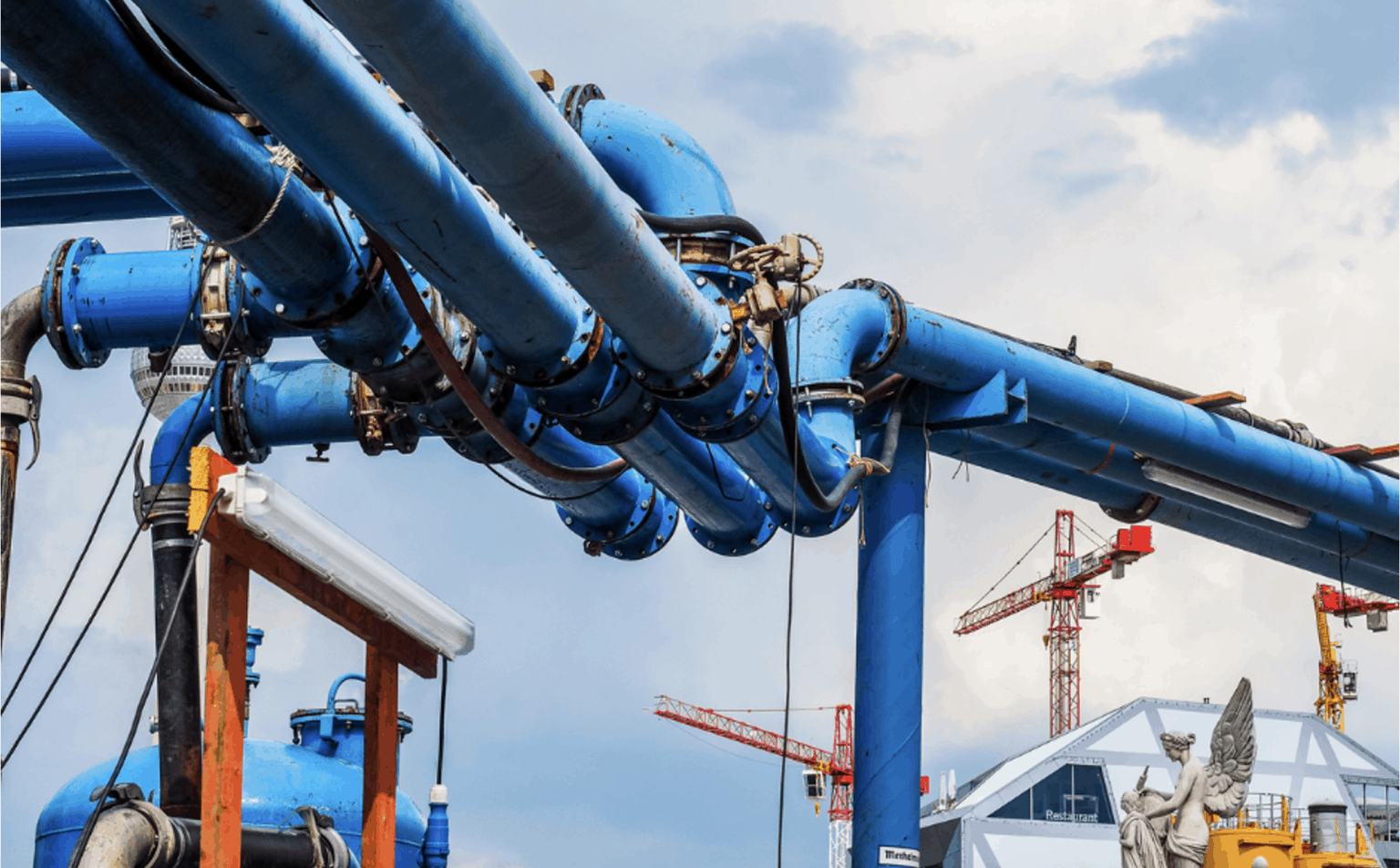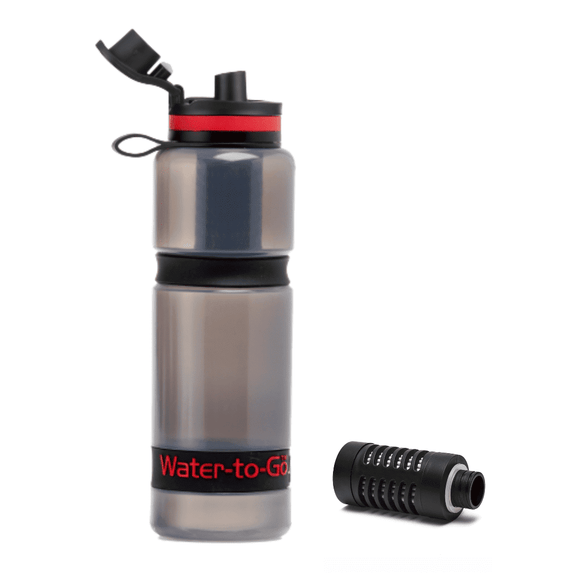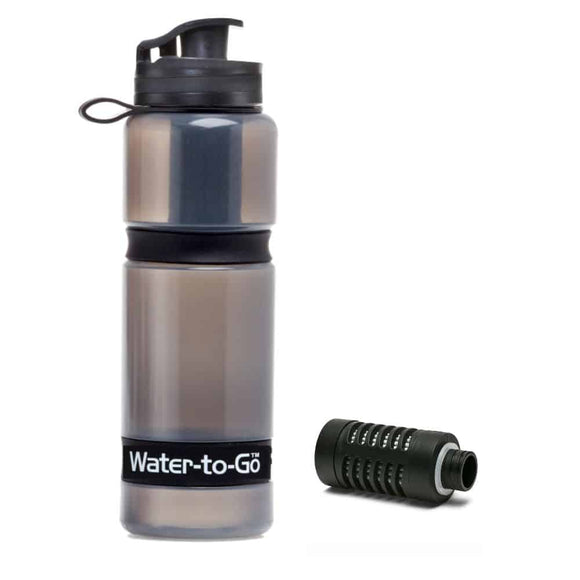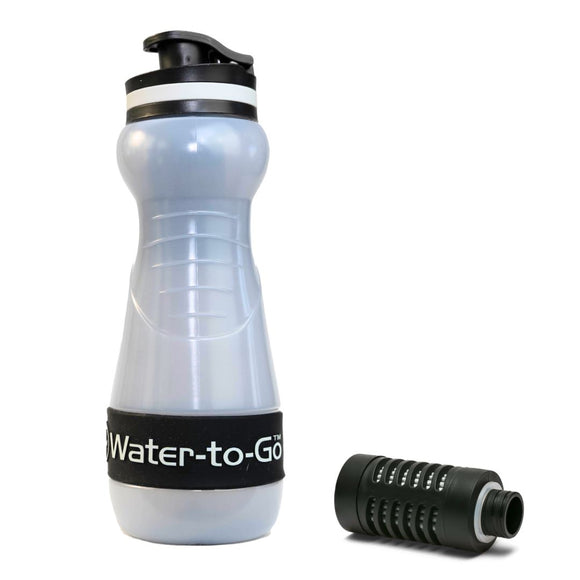Concern about lead in our drinking water is not just a regional problem. Lead in drinking water is an issue for millions of communities across the United States that do not have access to clean tap water or a filter to remove lead.
A recent study conducted by The National Resources Defense Council (NRDC) revealed that over 186 million people across the United States are exposed to dangerous lead levels in their regular drinking water systems.
The Environmental Protection Agency, The Centers for Disease Control and Prevention, and the American Academy of Pediatrics all recognize that lead in drinking water is not safe for anyone, particularly children.
Lead in drinking water is a crisis that should be immediately addressed on a local and national scale. In this guide to The National Resources Defense Council (NRDC) findings, we are going to discuss the importance of the issue and what we can do as a collective moving forward.
--------
Water-to-Go filters lead from your drinking water. Readers of this blog can get a 15% discount on Water-to-Go bottles. Use coupon code "LEAD" at checkout.
-------

1. The Issue With Lead In Drinking Water and Food
The NRDC analysis reflects the most recent EPA data that was collected between January 1st, 2018, and December 31, 2020. The study concluded that 56% of the US has unsafe drinking water due to lead. Across the board, it shows lead levels exceeding 1 part per billion, or ppb, which should be lower in order to protect individuals and families. The report also reveals how much lead is still in school water fountains and other local buildings.
The Food and Drug Administration monitors the permissible limit of lead in drinking water across water systems, food sources, food wares, dietary supplements, and cosmetics. While lead in the soil can be natural, it often comes from excessive industrial uses that result in environmental contamination.
How Lead Gets In Our Water and Food
Lead can come from different sources that affect our drinking water and food.
- Lead in the soil can be absorbed by the fruits, vegetables, herbs, and other plants that we consume
- Plant-based resources used in dietary supplements can show traces of lead
- Washing our fruits and vegetables with tap water that still has traces of lead from a water source
- Lead can be accidentally ingested by animals we eat which then passes on to us
- Manufacturing processes and plumbing that contain lead can contaminate water usage
- Lead in pottery sources and other food contact areas can leach into food
Health Effects Of Lead In Drinking Water
Lead is incredibly poisonous to all ages and health conditions. Particularly, lead is harmful to vulnerable communities that include infants, young children, pregnant women, and individuals with serious health conditions.
Lead in our water system it can negatively affect development among children including health concerns for the brain and nervous systems, which cause learning difficulties and behavioral problems. Lead is not safe for anyone, but there are ways for communities to improve their drinking water.
2. Where Lead In Drinking Water Is a Problem
Lead in drinking water is not just a Flint, Michigan issue. Due to the large scale usage of lead pipe in water systems and buildings during previous decades, lead toxicity has become an urgent issue for millions of people across the United States.
In 1974, the Safe Drinking Water Act (SDWA), which included provisions to test water for lead, was created to ensure everyone across the country had access to safe drinking water. While it was a great step forward towards long-term change, SDWA did not affect all communities equally.
The Flint crisis gave a face to the failures in our water systems and the victims that suffer from lead-contaminated water. The NRDC, Environmental Justice Health Alliance for Chemical Policy Reform (EJHA), and Coming Clean found there were drinking water violations that particularly affected certain socio-demographic groups. Due to a lack of ability to test water for lead and replace lead pipes, lead in water has disproportionately affected BIPOC and low-income communities.
The Number of Lead Violations
28 million people across the United States had water from drinking water systems that were cited for 12,892 lead violations. Seven million of those people had over 15 ppb of lead within their drinking water, which can lead to severe health conditions.
The NRDC calculated water violations across counties in the United States to show the number of water-related violations, health-based violations, monitoring and reporting violations, as well as whole systems with violations. Find a local community on the map here to learn more about violations across the country.

According to the groundbreaking NRDC report Watered Down Justice, violations are most persistent among racial, ethnic, and language-vulnerable communities. Without the ability to learn how to remove lead from tap water, the issue of lead in drinking water exponentially becomes more dangerous to these communities.
3. The Necessity of Lead Service Line Removal
Federal laws came into play in 1991 with the Lead and Copper Rule (LCR) but there has been little to show for it. The Lead and Copper Rule (LCR) was designed to regulate public water systems that have been affected by lead and copper contamination, but it also included exemptions and loopholes that have contradicted its general mission.
While the EPA’s Lead and Copper Rule is under the Safe Drinking Water Act, it still does not alleviate issues that plague our water systems. To aggravate the issue further, the EPA also has a 90th percentile rule. The 90th percentile rule means there is an exception for 10% of users that can exceed the threshold of lead and copper without being in violation of environmental laws. As of today, it is one of the most complicated environmental statutes and has proven to be insufficient in protecting individuals, families, and communities from water violations.

How Lead Enters The Water System
Lead weaves its way into tap water systems through old lead service pipes and plumbing that contains lead. While a major water treatment center may produce clean water initially, the water becomes contaminated with lead when it travels through old infrastructure that was not built with the same building codes that exist today.
Houses that were designed and built before 1986 were more than likely built with lead water pipes and lead plumbing. Back then, it was an available resource and planners did not have the research we have today that shows the danger of lead in drinking water
As a consequence, there are millions of affected communities that are still suffering from lack of awareness, actionable change, and proper legislation to protect them.
4. The Importance of Legislation for Lead Replacement
While individuals can use the water filters for lead to filter out toxins, on a state and national level legislation plays an important role in solving the water crisis that affects millions of people across the United States.
As of April 2021, the U.S. Senate passed a clean water infrastructure bill that provides $35 billion to update the water systems nationwide. The bill includes replacing some of the lead pipes that affect drinking water systems. Specifically, there is $300 million set aside for removing and replacing lead drinking water pipes that have been used in schools and local buildings.
The issues that lie ahead center around the question of whether legislation language can uphold rules and regulations moving forward without leaving space for future violations through loopholes, exemptions, and industry lobbying.
5. Lead Water Pipe Replacement In Homes
Lead service pipe replacement is a problem in communities and possibly a problem in your home. While the city may own the pipes running down the road, they do not own the pipes that run into specific houses. Homeowners should be aware if there are lead pipes running into their homes and consider the necessity of removing lead water pipes in homes as soon as possible.
Lead Water Pipe Replacement
On the market today, there are whole house filters that can be put within the home, but can be expensive. As a quick and low cost solution, homeowners increasingly are considering portable water filter bottles that remove lead as you drink.
7. What We Can Do Today
The NRDC has created calls to action that put pressure on legislators, the EPA, the President, and county water systems to implement meaningful change for the future of clean drinking water.
The calls to action discuss new legislation, fixing the laws around the drinking water, and enforcing rules to ensure communities are safe.
The five calls to action include,
1. Implement the Biden Administration Proposal
The Biden administration proposal is to remove 100% of lead service pipes entirely. This places a high priority on replacing pipes in communities that are at a higher risk and disproportionately impacted by outdated drinking water systems.
2. Fix Drinking Water Laws
The Lead and Copper Rule is one of many drinking water laws that should be reexamined and enforced. Fixing drinking water laws also means opening up opportunities for communities to advocate and receive relief funding from lawsuits against contaminated water.
3. Provision of Funding For Drinking Water Infrastructure
Provision of funding for lead and non-lead drinking water infrastructure projects is necessary and needed immediately for vulnerable communities that have continually been affected by the lack of safe lead levels in the water.
4. Enforce The Safe Drinking Water Act Rules
One of the main issues with the Safe Drinking Water Act is that the rules are not enforced to keep communities safe. Enforcement, as well as technical assistance and specific funding for low-income and BIPOC communities would help address the crisis of lead in water where it is most acute.
8. How Water-To-Go Can Remove Lead
Make sure you water filter really removes lead
Make sure you water filter really removes lead. There are plenty of water filter bottles available that promise to filter out contaminants but there are fewer options that can actually filter out lead. Water-to-Go water purification filters eliminate up to 99.9999% of water-borne contaminants, including lead. The 3-in-1 filter acts like a net within a net that makes it difficult for toxins to pass through. As a result, it keeps out lead, chemicals, pesticides and microbiological pathogens that can be found in drinking water.
The technology for the filter includes:
Mechanical Filtration
The small pore size stops contaminants like lead and other heavy metals from passing through.
Activated Carbon
Water-to-Go filters utilize an activated carbon filter that is held together within a membrane to reduce the likelihood of contaminants from passing through. It also removes bad taste, odors, and is stronger than the average domestic filter for home use.
Electrical Charge
A positive charge in the filter reduces the pore size further to attract contaminants and trap them inside the filter. The filter design is created to fight against water-borne diseases and does not require the use of chemical tablets or batteries.
Water-to-Go water filtration bottles help reduce plastic waste, while also keeping individuals, families, and communities safer by providing immediate relief against the harm of lead in water.
While drinking water legislation is debated, simple things like a water filter bottle can protect our health and wellbeing.
Conclusion: Creating a Better Way Forward
Lead is prevalent in our communities and is more harmful than we ever initially thought. With the NRDC report alongside EPA regulations, there are steps being put in place to protect us and our families against long-term health complications. But those changes take time and money. For an immediate and low-cost way to filter lead from your drinking water, consider a water purifier bottle.
Water-to-Go filters lead from your drinking water. Readers of this blog can get a 15% discount on Water-to-Go bottles. Use coupon code "LEAD" at checkout.




